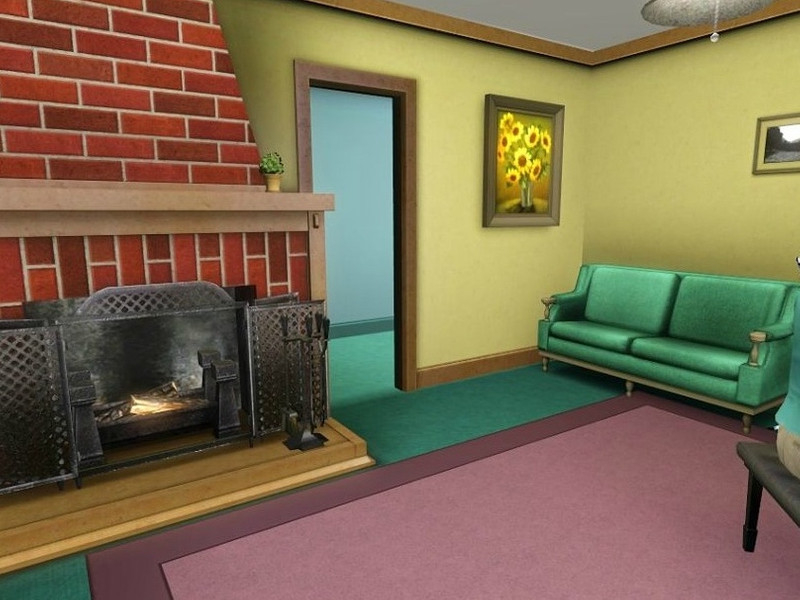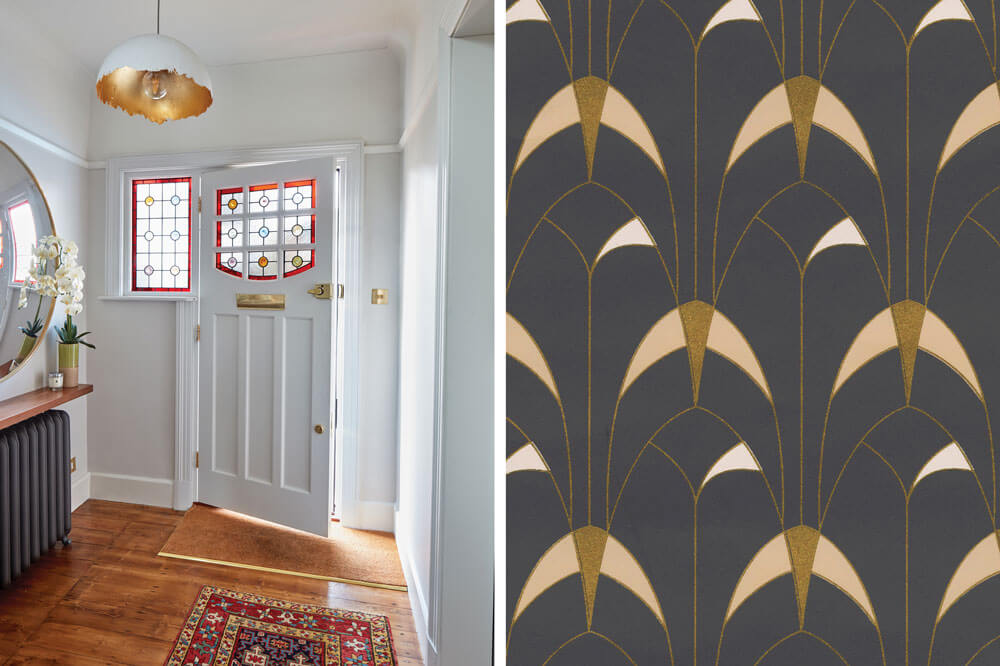Table Of Content

At the 59th Annual Primetime Emmy Awards in 2007, MacFarlane performed (as the digitally inserted Stewie and Brian) the ceremony's opening number. He performed a song insulting modern television to the tune of the song "The Fellas at the Freakin' F.C.C." performed in the episode "PTV". The song insulted TV shows such as Two and a Half Men, Desperate Housewives, and Scrubs, as well as the final scene of The Sopranos.
Here Is the Complete Fox Fall 2021 TV Schedule
Peter works as an assembly worker in a toy factory in early episodes but is a self-employed fisherman and an employee of the fictitious Pawtucket Brewery in later episodes. Peter entertains the Clam's patrons on the piano while drunk in "Wasted Talent". In 17th-century England, an ancestor of Peter, Griffin Peterson, founds Quahog after being exiled to the New World and later wins ownership of it in a talent show against his king.
Donald Payne Jr., who filled father’s seat in the House, dies at 65
Here's How Much The Simpsons and Other Animated Houses Would Cost - TheStreet
Here's How Much The Simpsons and Other Animated Houses Would Cost.
Posted: Wed, 05 Apr 2023 07:00:00 GMT [source]
Discovering him, Meg chases after Chris while Stewie walks by the staircase. Accidentally bumped by them, Stewie tumbles down the stairs and loses consciousness after suffering a severe head wound. Chris and Meg hide the wound with a hat, but Peter figures out the charade, reveals that he has knocked both of them out plenty of times, and wishes to continue hiding Stewie's injury from Lois.
‘NCIS: Hawai’i’ Canceled After Three Seasons at CBS
Lois falls in love with it, and suggests he meet with network executives about producing the show. While the initial casting session goes well, with Elijah Wood auditioning for the lead, the producers assigned by the executives also bring in James Woods, who performs the role in a more comedic fashion, winning over the executives. Brian's serious drama is turned into a sitcom, bringing in a live studio audience as well as a chimpanzee, and renaming it Class Holes. When Brian objects to the changes, the producers remind him of what he had tried to achieve for many years—his own television show—and threaten to fire him if he objects to the changes. Disappointed that Brian allowed the executives to change his show so drastically, Lois demands that he stand up for himself and object to everything James Woods changed about the show.
Characters
Family Guy uses the film-making technique of cutaways, which occur in the majority of Family Guy episodes.[125] Emphasis is often placed on gags which make reference to social phenomena and/or modern cultural icons. The town's local "celebrities" are Tom Tucker, an arrogant, baritone-voiced news anchor at Channel 5, and Diane Simmons, the station's 40-year-old former news co-anchor who was killed off in "And Then There Were Fewer". The two work alongside Tricia Takanawa, a stereotypical Asian reporter who speaks with a nasal monotone cadence; and Blaccu-Weather meteorologist Ollie Williams, a fast-talking chubby African-American man who rarely speaks for more than about 1–2 seconds. The en suite master bathroom also changes position as needed, often appearing to the right of the bed in episodes such as "Nanny Goats", and to the left in "Spies Reminiscent of Us" and in "Connie's Celica". However, not only is the above mentioned Quonset hut to the left, but in other episodes such as "Guy, Robot", Lois is shown to have a dressing table there. Jay Duplass and Kelvin Yu are the latest additions to the cast of FX‘s limited series adaptation of “Dying for Sex,” Variety has learned exclusively.
Animated antics of the constantly grousing Griffins, a family that put some fun in dysfunctional. Then there are hapless teenagers Meg and Chris; sassy baby Stewie, who's wise (and a wise guy) beyond his years; and family dog Brian, who might be the smartest of the lot. Lois challenges the family to throw anything out of the house that does not spark joy. Peter's past as a sperm donor catches up to him when his children start showing up at his house. Peter joins a traveling Renaissance fair and falls afoul of the infamous Black Knight. Meg lands an intership working with the school nerd at a television station.
Season 22Season 22Season 22
The series celebrated its 25th anniversary on Jan. 31, 2024, and the cast and EPs participated in a panel at PaleyFest LA to celebrate the milestone on Friday, April 19. Murphy could call for a special primary to replace him, which under state law would have to be held 70 to 76 days after he issues the writ. That would be followed by a special election 60 to 64 days later to fill the remainder of Payne’s current term. Since then, the Griffin family and their eccentric cohorts have continued to entertain audiences with their outrageous antics. Now, as the series celebrates 25 years since its inception, creator Seth MacFarlane is reflecting on the show’s enduring success and the possibility of its future. It seems today that all you see is long-running television series being canceled, but lucky there’s a Family Guy.
Finneas Made An Observation About An Obscure Part Of 'Family Guy' Lore - UPROXX
Finneas Made An Observation About An Obscure Part Of 'Family Guy' Lore.
Posted: Wed, 07 Dec 2022 08:00:00 GMT [source]
Seth MacFarlane Slams Tucker Carlson, Wishes ‘Family Guy’ Didn’t Air On Fox
However, when a raccoon bites into Stewie's head, the injuries get worse and Meg insists on taking Stewie to the hospital. Peter agrees and upon seeing Lois pulling out of the driveway, throws Stewie behind her car, making it appear as if Lois ran him over to induce her guilt. Lois suggests they frame someone else, but Peter professes his love for her and suggests they take Stewie to the hospital. Stewie later walks in on the family with his head wrapped in bandages, revealing that several months have passed since his accident. On the way to the funeral, Lois reminisces about growing up with her nanny and spending time by a pond.

There, she bumps into her nanny's sister and finds out that she was fired after having an affair with Carter. Lois chews out her father for getting rid of the one person in her life who paid attention to her. After delivering the eulogy, they ride home in silence and Lois eventually falls asleep. Carter uses the opportunity to call in some favors and has Lois' pond reconstructed on the mansion grounds. However, as they bond again, Carter learns that the former groundskeeper has died and has to tell Lois more secrets. Located in Quahog, Rhode Island, my Family Guy house layout makes an excellent conversation piece or Christmas gift for anyone who loves the TV show!

MacFarlane redesigned the films' protagonist, Larry, and his dog, Steve, and renamed them Peter and Brian, respectively. MacFarlane pitched a seven-minute pilot to Fox in December 1998, and the show was greenlit and began production. Family Guy's cancellation was announced shortly after the third season had aired in 2002, with one unaired episode eventually premiering on Adult Swim in 2003, finishing the series' original run.
As an actor, Duplass is known for his roles in shows like “Transparent,” “The Mindy Project,” “Industry,” “The Chair,” and “Percy Jackson and the Olympians.” Behind the camera, he and his brother, Mark, co-created the HBO series “Togetherness” alongside Steve Zissis. The brothers also co-created HBO’s “Room 104” and co-wrote and directed feature films like “Baghead” and “Jeff, Who Lives at Home” among several other collaborations. Discovering him, Meg chases after Chris, while Stewie walks by the staircase. Accidentally bumped by them, Stewie tumbles down the stairs and becomes unconscious, suffering from a severe head wound. Continuing the charade, they are approached by Peter, who asks how long Stewie has been unconscious. While Chris and Meg are shocked that he knows the truth, Peter reveals that he has knocked both of them out plenty of times, and is willing to continue hiding Stewie's unconsciousness from Lois until he can frame her for causing the injury.
Stewie rams a toy spaceship into Peter's ear, annoying him, so Peter throws Rupert into the basement. Stewie follows the bear, discovering an old television script that Brian wrote entitled What I Learned on Jefferson Street. Stewie tosses the script onto the kitchen table, prompting Lois to question what it is about.
Favorable DVD sales and high ratings from syndicated reruns since then convinced Fox to revive the show in 2004; a fourth season began airing the following year, on May 1, 2005. Mila Kunis and Lacey Chabert have both voiced Meg Griffin.[92] Chabert left the series after the first season because of time conflicts with schoolwork (at the time) and her role on Party of Five. When Kunis auditioned for the role, she was called back by MacFarlane, who instructed her to speak slower.
Borstein shines as the sharp-tongued matriarch Lois Griffin, while Green infuses the family’s teenage son, Chris, with a blend of naiveté and humor. Kunis rounds out the cast as the voice of Meg Griffin, the oft-maligned and misunderstood teenage daughter. My Family Guy house layout is a unique way to celebrate your favorite cartoon characters and makes a great Christmas gift for anyone who loves the TV show! Created from my imagination, this is the second floor of the charming two-story home of the Griffins -- Lois, Peter, Stewie, Meg, Chris and Brian. In Lois and Peter's room, we find Lois' role playing costumes in the closet. Stewie's room has lovely built-in bookcases that contain his instruments of world domination which sit near his changing table.
In Canada, the series premiered January 31, 1999, on Global[254] and September 1, 2003, on Teletoon at Night. Family Guy premiered in Australia on April 9, 1999, on the Seven Network, in 2000 on Fox8, and on 7mate on September 27, 2010.[253] Initially, only 2 seasons were available to stream on Disney+ Star due to pre existing contracts. The other 17 seasons were added on December 1, 2021, after the contract expired.
Peter falls into a coma and meets God face to face; he asks God some of life's tough questions. Peter decides to turn the mansion into a hotel and employs the kids as staff. Stewie decides to play matchmaker for the town librarian and gets a connection going between her, Dr. Hartman and Principal Shepherd. She eventually chooses Dr. Hartman due to the money, but Stewie manages to hook Principal Shepherd up with Dr. Hartman's mother instead. In "One if by Clam, Two if by Sea",[5] after a hurricane, The Drunken Clam became "The Clam's Head Pub", much to Peter and the guys' disgust, as new owner Brit Nigel Pinchley took over.




